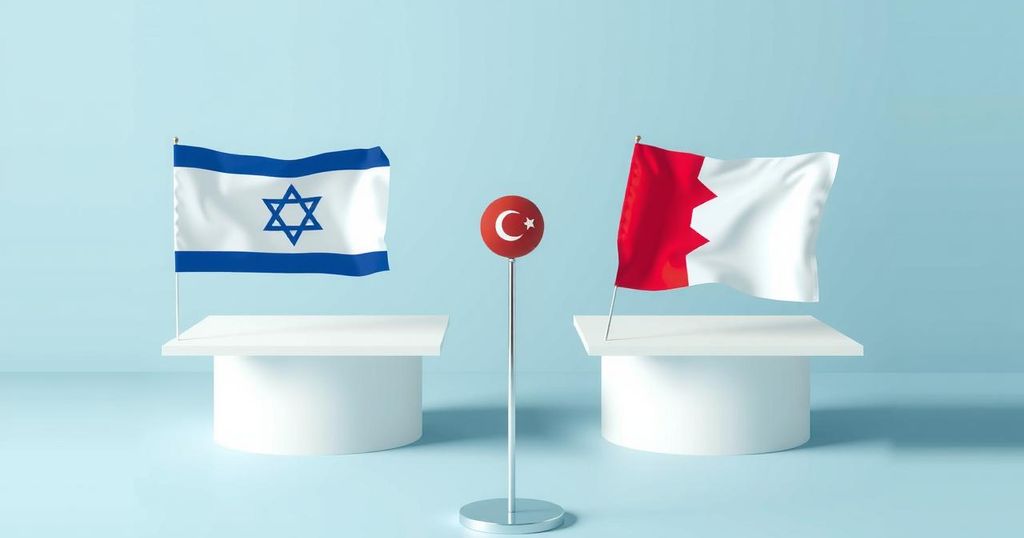Israeli negotiators are set to engage in talks in Qatar to extend the truce in Gaza following a recent cessation of electricity aimed at pressuring Hamas for hostage release. Ongoing humanitarian crises persist as negotiations continue, with both sides facing significant challenges in reaching a lasting resolution to the conflict.
Israeli negotiators are scheduled to travel to Doha on Monday to engage in discussions concerning the extension of an ongoing ceasefire in Gaza. This decision follows Israel’s recent actions of cutting off electricity supply, intended to intensify pressure on Hamas. Although the initial phase of the truce concluded on March 1 without achieving an agreement on its continuation, both parties have refrained from full-scale hostilities since then.
Significant disagreements persist regarding the terms of a potential second phase of the truce, which has largely aided in ceasing violence since Hamas’s attack on Israel on October 7, 2023. While Hamas is advocating for immediate negotiations, Israel favors extending the current ceasefire. Amid these tensions, Israel has halted aid deliveries to Gaza and announced further electrical cuts to compel Hamas to release hostages.
Energy Minister Eli Cohen emphasized, “We will use all the tools at our disposal to bring back the hostages and ensure that Hamas is no longer in Gaza the day after” the conflict. This strategy mirrors the initial wartime measures when Israel imposed a “siege” on Gaza, resulting in disrupted electricity and severe humanitarian conditions for the population currently living in makeshift tents amid low nighttime temperatures.
Hamas has continually asserted that the second phase of the truce—facilitated by Qatar, Egypt, and the United States—should encompass a comprehensive exchange of hostages, a full withdrawal of Israeli forces from Gaza, a permanent ceasefire, and the reopening of border crossings to remove the blockade. Spokesman Hazem Qassem insisted that Hamas seeks guarantees from mediators that Israel will adhere to the agreed terms.
Former U.S. President Joe Biden proposed a second phase that encompasses the release of hostages alongside the withdrawal of remaining Israeli forces. Recent discussions between Hamas representatives and mediators occurred in Cairo over the weekend, while U.S. envoy Adam Boehler indicated there could be a resolution concerning all remaining hostages within weeks. Currently, 58 of the 251 hostages captured during the October 7 incident remain in Gaza.
Amid intensified negotiations, U.S. envoy Boehler conveyed optimism regarding a “long-term truce” being imminent, asserting that the U.S. would support any Israeli decisions, including potential military action. Historically, proposals concerning the displacement of Palestinians from Gaza have met resistance, prompting alternative reconstruction schemes. The first phase of the truce began on January 19, alleviating hostilities that had displaced nearly the entire populace of Gaza.
During this initial ceasefire period, hostages were exchanged, allowing humanitarian aid into Gaza. However, subsequent Israeli decisions to halt aid deliveries have led to widespread famine, as confirmed by statements from local residents lamenting the dire conditions. According to reports, the conflict has resulted in significant casualties, exacerbating an already critical humanitarian situation in the region.
The ongoing negotiations in Qatar illustrate the complex dynamics surrounding the truce in Gaza, particularly regarding hostage release and Israeli military presence. Israel’s actions, aimed at leveraging hostages for concessions, have exacerbated humanitarian issues in Gaza. Despite this, there remains hope for a long-term ceasefire as key international stakeholders continue to mediate between both parties to achieve a resolution. The situation remains critical, with civilians bearing the brunt of the conflict’s ramifications.
Original Source: www.rfi.fr




